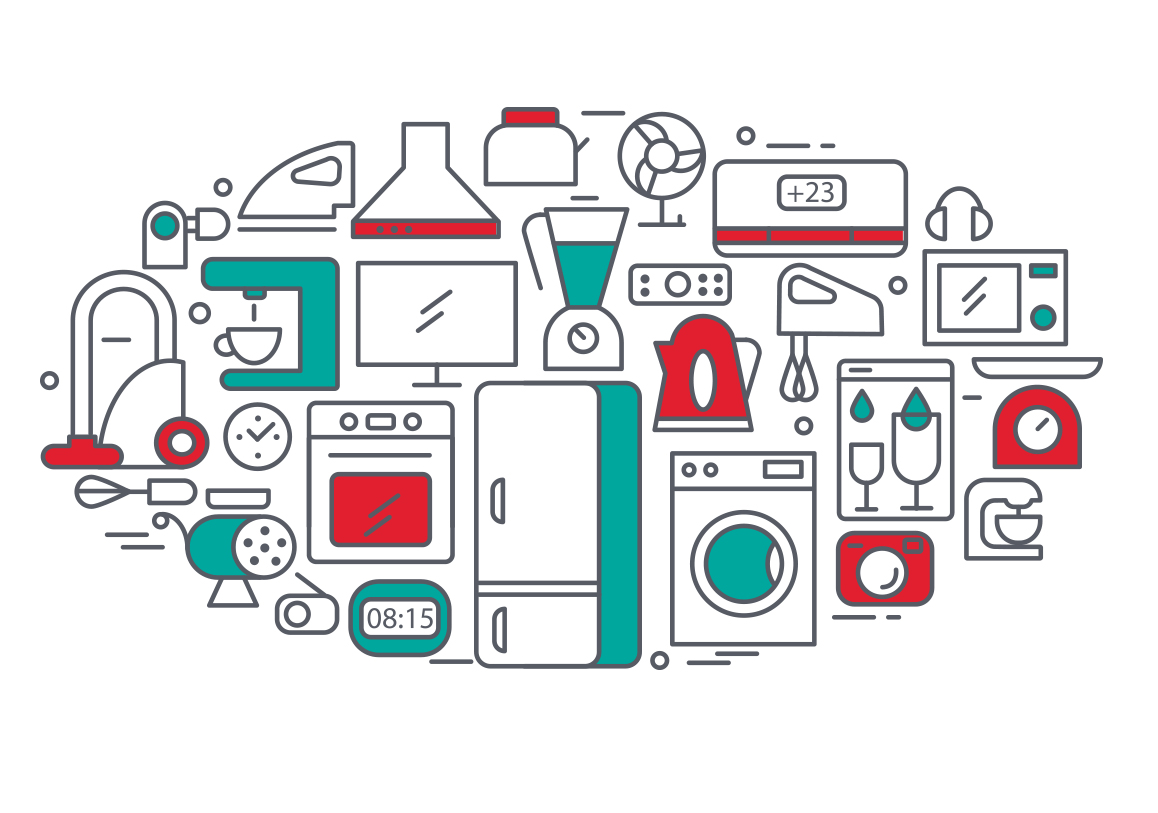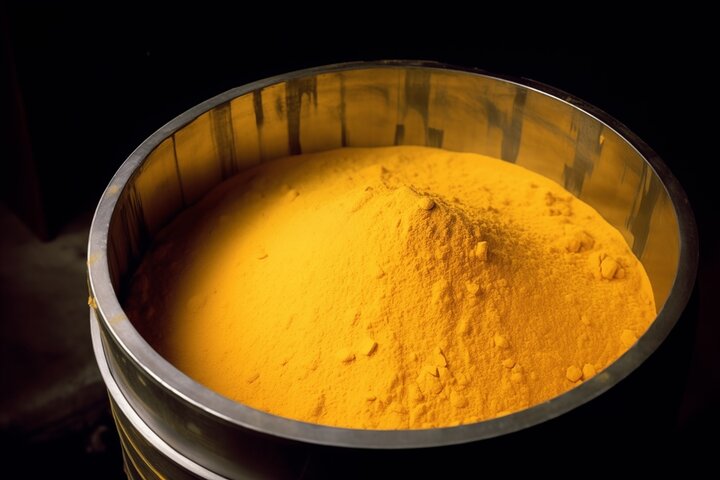Amid concerns over China’s weakening housing market, stock prices of Chinese home appliance manufacturers have taken big falls. No doubt the sector is facing major challenges, but the trend of consumption upgrades, the potential of e-commerce and the emergence of the Internet of Things also present exciting opportunities for innovative companies.
Haier[i] is China’s largest home appliance maker. Its well-told story began in 1984 when an old state-owned refrigerator factory in Qingdao, a coastal city in China’s Shandong Province and a former German colony, introduced German technology through partnering with Liebherr[ii] and appointed a young official named Zhang Ruimin, Haier’s now legendary CEO, to lead the near-bankrupt enterprise. Zhang’s act of publicly sledgehammering 76 faulty fridges as a vow of strict quality control has since been an enduring part of Haier’s corporate image. Riding the waves of China’s economic boom and the population’s rising incomes, Haier grew its annual revenue from CNY3.5 million in 1984 to CNY200 billion in 2014.
In part due to state-owned entity (SOE) reforms, China’s whitegoods sector rapidly consolidated in the last three decades, with the top three brands now accounting for 50-70% of market share in major appliances. In this process Haier carved out a solid position in its main product categories. With more than a quarter of the country’s total market, it is the clear leader in refrigerators and washing machines. In air-conditioners Haier has managed to capture 12% of the market share, but consistently lagged domestic rivals Gree and Midea which together control more than half of the market. Gree’s focus is predominantly on air-conditioners and has a superior brand and technology in this segment. Midea on the other hand is a stronger competitor in multiple categories and leads in small appliances.
Whitegoods is a semi-cyclical business. As China’s property boom cools, urban markets reach saturation and several governmental subsidies (rural and energy saving schemes) cease, sales are increasingly dependent on replacement demand (estimated at 45-63%). Manufacturers are trying to capture the product upgrade trend and Haier has been quite successful with its premium brand Casarte which has roughly 50% of the high-end fridge and washing machine markets, with average selling prices more than double those of other domestic brands and exceeding even Siemens’.
From rodent-proof fridges to potato-peeling washing machines, to vertical-projection televisions for pregnant women to watch while lying flat, Haier has built a reputation for innovation in response to customer needs. With the proliferation of Internet users, Haier is actively tapping into crowdsourcing, big data and open innovation. It created a multitude of online platforms (with more than 37 million registered users and hundreds of millions more on social networks) to connect consumers, inventors, suppliers and entrepreneurs, aiming to better gauge consumer preference, shorten product R&D cycle and lower procurement costs. In addition to incubating new products with collaborators, Haier also seeks to generate income by providing services to different stakeholders, such as data analytics, supply and demand auto-matching, market analysis and distribution.
Haier is an early mover in smart homes and has a product/service two-pronged strategy. It launched the U+ Smart Life open source platform in 2014, supported by U+Cloud, U+Big Data and U+APP. Initial sales results are promising, with 1 million units of smart appliances sold in 2014, generating CNY3 billion in revenue, and another 1.1 million units sold in the first half of 2015. Other appliance makers, particularly Midea, however, are beginning to catch up.[iii]
Through U+ Haier aims not only to boost earnings from the sale of its own smart appliances and new products such as smart chips, but to also profit from services over the long-term (apps, online advertising and payment, cloud services and data analytics). The key to turning U+ into a “universal” standard and building a true ecosystem around it lies in third party adoption and connectivity across devices of different brands and integration with offline service providers. To attract third party product and content developers, Haier established a CNY320 million fund jointly with Softbank private equity to provide financing. It has also been seeking partnership with hundreds of companies across a wide range of industries that form part of the U+ smart life ecosystem, from internet service providers (e.g. Baidu, Tencent) to electronics makers (e.g. Samsung, Huawei), utilities, to health care providers. It nevertheless remains a challenge to attract third party manufacturers to adopt U+ as many have a smart home strategy of their own. For instance, Midea has joined forces with Xiaomi, a leading Chinese smartphone company, to forge ahead in this nascent market by combining their respective expertise in hardware and software.
Another component of Haier’s strategy to become more service oriented is the expansion of its integrated channel services (ICS) business, comprising distribution, logistics, after-sale services and e-commerce, which accounted for 19% of Qingdao Haier’s 2014 revenue. Haier boasts of a logistics network that consists of nearly 100 distribution centres and which guarantees delivery within 24 hours in thousands of cities and counties throughout China, including two cities in Tibet. It has particular strengths in last-mile delivery for large-format goods and has been increasing its efforts to capitalise on this through servicing third parties, with some rival appliance makers as well as e-commerce platforms such as JD.com and Tmall.com counting among its clients. Total logistics revenue increased by over 45% in 2014 while revenue from third-party business grew over 150% (aided by acquisitions). There is potential for further growth if Haier’s expansion into furniture, less-than-truck-load logistics and cold-chain logistics proves successful.
When it comes to exports, Haier has differentiated itself by adopting an original design model (ODM) which integrates design, manufacture and distribution in offshore markets under its own brands, but requires much more capital outlay and has less security for revenue and cash flow when compared with the original equipment manufacturer (OEM) model. Gree and Midea respectively have round 50% and 60% of export sales under proprietary brands or an ODM,[iv] while all of Haier’s exports bear its own brands, giving it stronger branding internationally. Haier has been the most aggressive among Chinese appliance makers in terms of international expansion, building high profile industrial parks offshore and acquiring iconic foreign brands (Sanyo in 2011 and Fisher & Paykel in 2012). However, it remains a challenge for Haier to gain meaningful market shares under its original design model in developed markets such as the USA where mature local brands and more established foreign competitors are generally favoured over Chinese brands despite lower prices. It remains to be seen how Haier’s recently announced US$5.4 billion acquisition of GE’s appliance business will play out.
We are under no illusion about the headwind faced by Chinese appliance makers in a slowing economy, but Haier does have a solid business (with RoCE averaging 50-65% over the past five years), is doing interesting things to capture the opportunities in the upgrade consumption trend and smart homes, and the recent sell-down in the A-share market gave us an opportunity to buy Qingdao Haier at a P/E of 8x 2017E, which is cheap both on an absolute basis and relative to western peers (Electrolux: 13x; Whirlpool: 10x). Midea is also growing steadily, with even stronger growths than Haier in some segments, but the latter has a superior distribution model and a stronger logistics network. Gree is also trading at very attractive valuations and has a higher yield, but some of its accounting practices have left us totally at sea.
DISCLAIMER: The above information is commentary only (i.e. our general thoughts). It is not intended to be, nor should it be construed as, investment advice. To the extent permitted by law, no liability is accepted for any loss or damage as a result of any reliance on this information. Before making any investment decision you need to consider (with your financial adviser) your particular investment needs, objectives and circumstances. The above material may not be reproduced, in whole or in part, without the prior written consent of Platinum Investment Management Limited.

